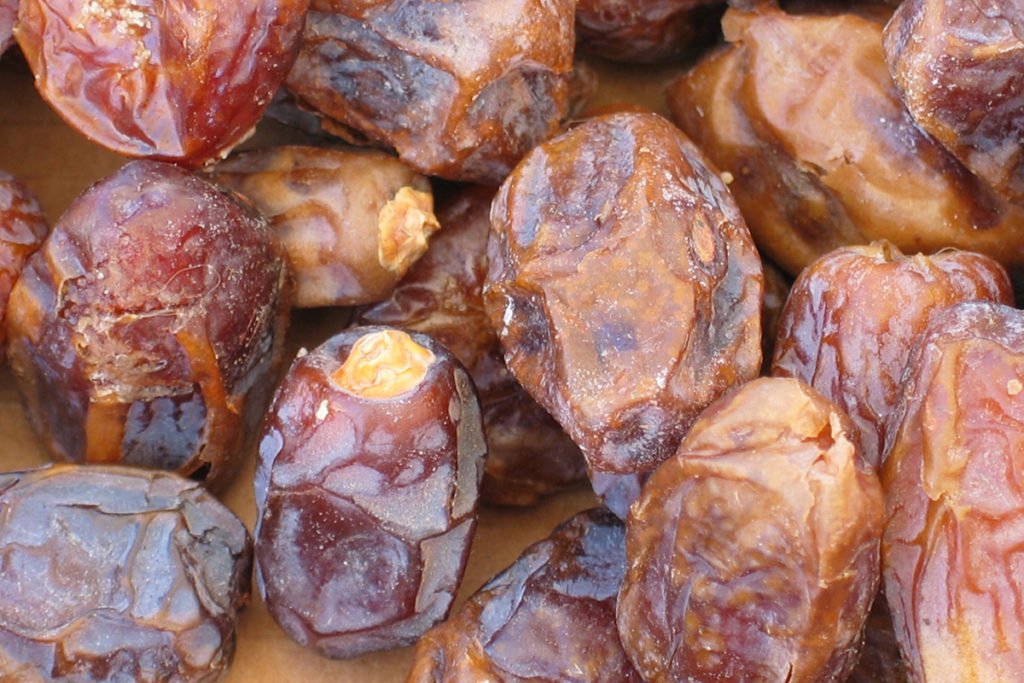Dates

Of all the sweets that autumn brings, none are as sugary as the fruits of Phoenix dactylifera, the date palm. Spanish missionaries introduced dates to California in the 1700s, followed by other introductions in the 1800s. In the United States, they are cultivated in the Coachella Valley and in some parts of Arizona, the only places where climate conditions will support fruiting. The specific origin of date palms is unknown, but thought to be somewhere in North Africa or the Persian Gulf region. They have been cultivated since prehistoric times (perhaps for over 8,000 years) and are a staple in the diets of many peoples.
Some of the most crucial work on a date farm happens long the before the fall harvest. For date palms to set good fruit, they must be hand-pollinated in late winter and early spring. To do this, a human pollinator must collect pollen from the male trees and dust it onto stigmas of the female flowers (the pollen from one male can pollinate about 50 females). Dates are harvested by hand from September to December.
